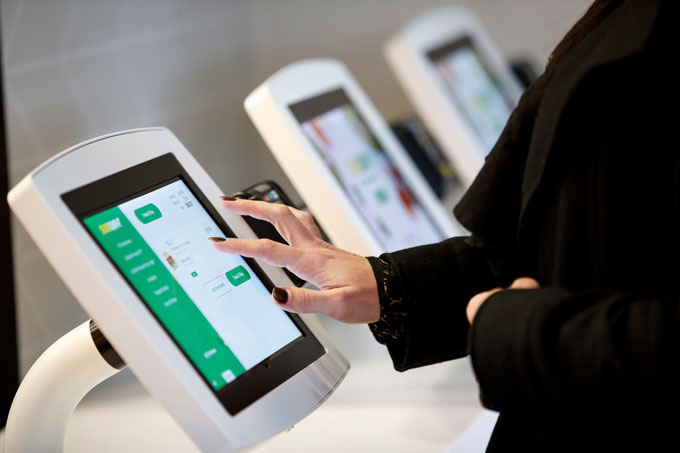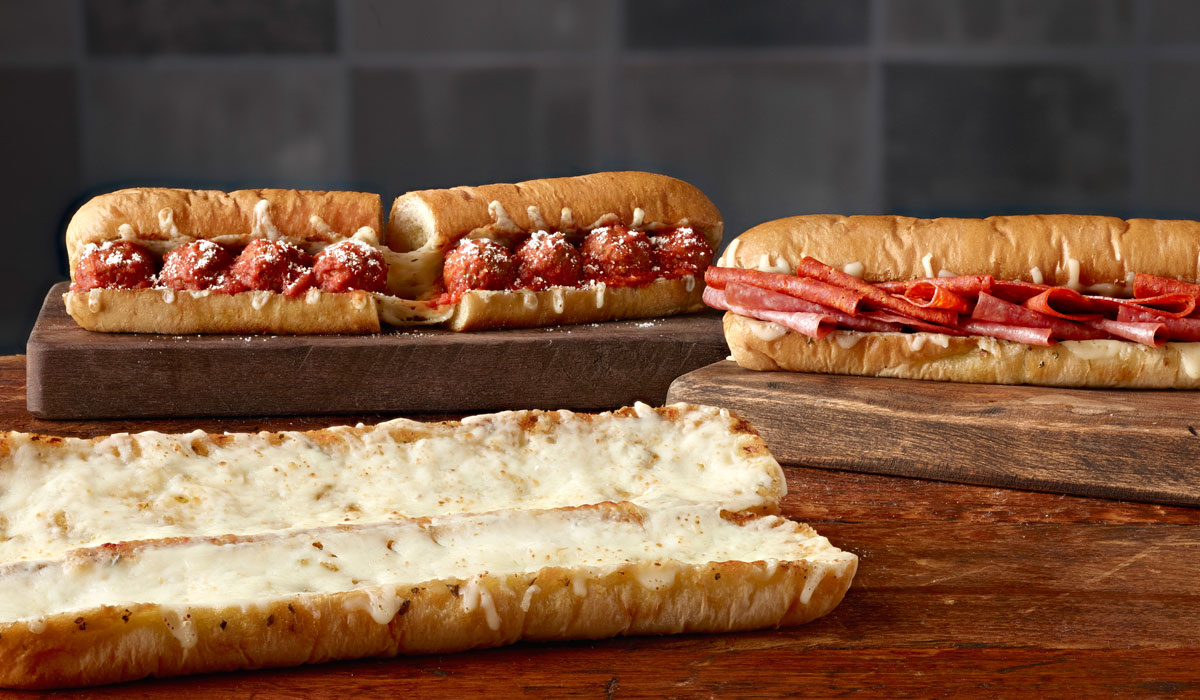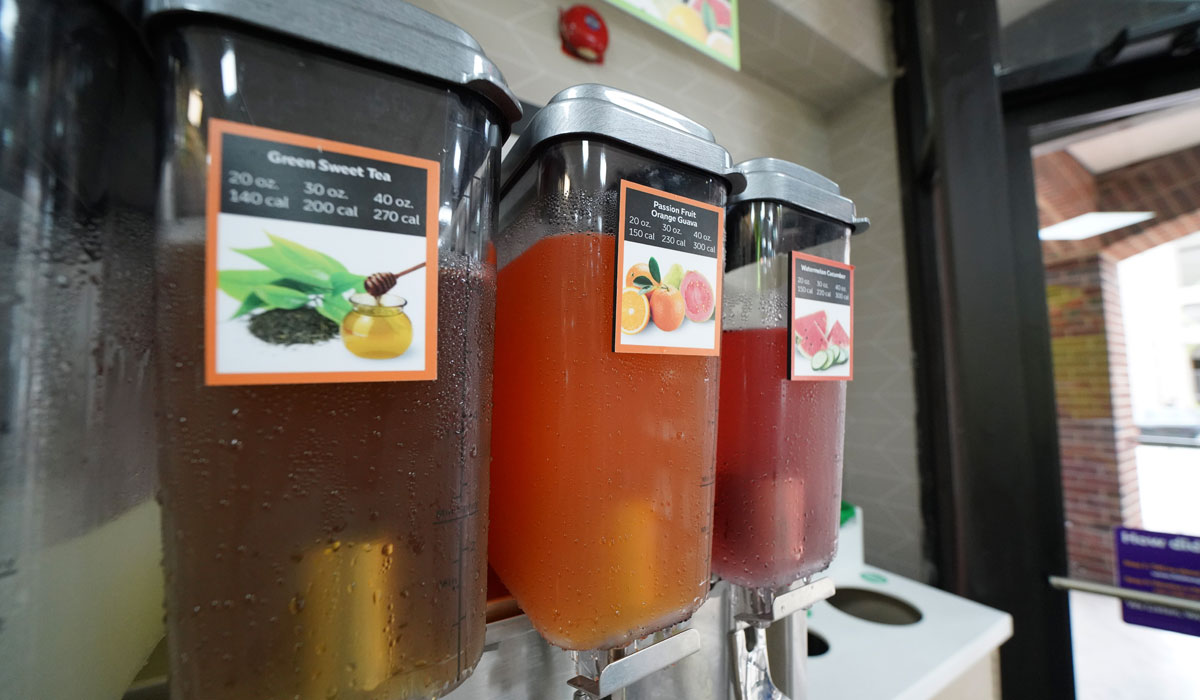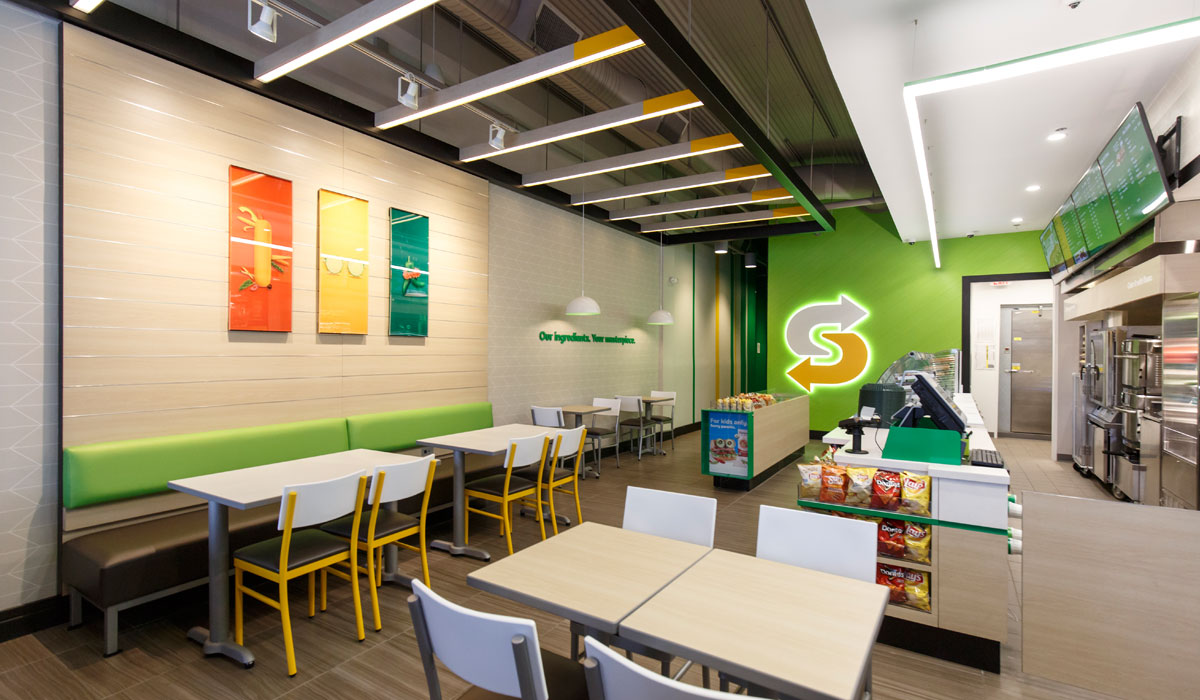The most visible signs that change is underfoot at Subway come in the way of the physical stores themselves: the world’s largest restaurant company, experiencing declining sales, has shuttered hundreds of units in recent years to focus on only the most desirable locations. And inside remaining restaurants, Subway has rolled out new designs and physical features to freshen the image of the 54-year-old company.
Yet behind the scenes, culinary teams have heavily invested in research and development efforts that may well transform the brand’s menu for years to come. Subway has already launched a new cheesy garlic bread product and tested a pit-smoked meat sandwich—just small samplings of an aggressive pipeline of new foods under development. Collectively, Don Fertman, Subway’s chief development officer, says efforts to reinvigorate both menu boards and real estate are helping right the ship.
“We are moving in a positive direction,” says Fertman, a 38-year veteran of the brand. “We’re moving in the right directions plural because we are building a brand that will be stronger than ever before.”
Subway has struggled in recent years to maintain its dominant position in the quick-service sandwich arena: 2018’s total sales of $16.2 billion were down $390 million from the previous year. And the brand closed more than 1,000 U.S. stores—a little more than 4 percent of its total locations in 2018. That followed the closure of some 900 units in 2017. Even so, executives say the years-long effort to examine locations is paying off by focusing on the best properties.

“I think we have a smaller but stronger footprint,” Fertman says. “So were moving in the right direction ultimately.”
He says Subway has strengthened its relationship with franchisees, many of whom grew frustrated over the thin profit margins associated with the brand’s marquee $5 footlongs promotion. Though that promotion drove huge traffic for some locations, Subway has adopted a new marketing tact for the future.
“What we’re moving toward is a change in strategy from maybe discounting core sandwiches to really introducing a broader range in sandwiches and food ideas over a wide variety of price points,” Fertman says. “And that represents a pretty profound change in our go-to-market strategy.”
Subway isn’t about to abandon its classic Italian B.M.T. or Meatball Marina subs. But the brand is busy “blazing new trails” in efforts to build the most compelling menu in the quick-service space, says Len van Popering, Subway’s vice president of brand management and culinary innovation.
“We absolutely want to balance those Subway classics that our guests have come to know and love,” he says. “But we are also responding to what we’ve heard loud and clear even from our most ardent fans: they’re looking to us to provide bolder flavors, new and interesting experiences and even more options than what they’ve enjoyed from Subway in the past.”


To that end, Subway rolled out its Ultimate Cheesy Garlic Bread in December. That product starts with Subway’s mainstay Italian bread that’s then smothered in garlic butter, mozzarella and Parmesan cheese before hitting the toaster. That proved to be Subway’s strongest promotion in five years, van Popering says, improving top-line sales, bottom-line restaurant profitability, and frequency among loyal and less frequent guests alike.
The sandwich chain is also leaning on its partnership with Tastemade, a food media brand known for its social media prowess. Tastemade touts sophisticated data about how consumers interact with food and how food connects to the wider culture. Such insights served as inspiration for the Green Goddess Tuna Melt, an LTO available in 3,000 restaurants that combined Subway’s classic tuna offering with green goddess dressing, a popular ingredient frequently featured in online recipes.
“We were able to put together a mashup essentially of these two great flavors for the first time in the industry,” van Popering says. “That is part of a much broader recommitment to food innovation.”
Subway is pushing new menu items out across the globe, including paninis in New Zealand and Signature Wraps in the Middle East. Moving forward, van Popering says, Subway will maintain its everyday value options. But he’s more interested in defining value by the overall experience, not just a singular price point.
“Subway has been and will continue to be successful over a wide range of price points,” he says. “We have more compelling food offerings now than we can even bring to market at one time to test. That is one reason we’re bullish.”
Subway’s menu changes fit into its wider, systemwide facelift: So far, more than 1,200 restaurants in 40 countries have been remodeled with the Fresh Forward design, which features a bright color palette, new kiosks, and digital menu boards. Mandatory for all new locations, Fresh Forward is helping boost sales, traffic, and customer satisfaction. In addition, Subway invested more than $80 million in its Fresh Now program, which encourages customization with new sauces, toppings, and beverage options. The new design, already in 14 countries, will be introduced to nearly all U.S. restaurants this year at no cost to operators.


In recent weeks, Subway announced it would partner with vendors to offer $10,000 grants, about a quarter of the remodel costs, to help franchisees introduce the Fresh Forward and less expensive Fresh Start designs.
“A good store redesign can move the needle. I think that’s absolutely the right thing to do,” says Matthew Mabel, president of consultancy Surrender Inc. “Store design has never been Subway’s strongpoint. The sandwich has been their strongpoint and the healthy message has been their standpoint. So, if they can modernize and update, that can really move the needle.”
Mabel believes Subway was, for too long, defined as a healthy alternative in the sea of fast-food options. That worked well for years, until many competitors began introducing their own healthy options and other brands built their whole businesses around healthy eating. At the same time, premium sub shops proliferated the scene, touting high-quality ingredients at higher prices.
“It’s an interesting case. It’s something a lot of people are looking at. And after being dominant for so long, it’s kind of a business school case.” — Matthew Mabel, president of consultancy Surrender Inc.
To win back customers, Mabel says, Subway should be wary of moving up and down price points simultaneously: “They need to pick one,” he says. Still, the brand seems to be moving in the right direction by broadening its appeal.
“I think they’re going to have to continue to refocus the brand, the look, the logo, the feel as they look forward to getting back to the dominant player they have been historically,” Mabel says. “Their competitors have picked off their guests in the segment and now they’ve got to get them back. They’ve got to convert those longtime Subway guests that have left.”
Mabel suggests Subway examine every part of the operation, from employee uniforms to marketing to the menu. But even then, the world’s largest restaurant company doesn’t need to start from scratch.
“It’s more than tweaking, but less than major, drastic changes. But I think everything needs to be freshened,” Mabel says. “It’s an interesting case. It’s something a lot of people are looking at. And after being dominant for so long, it’s kind of a business school case.”






